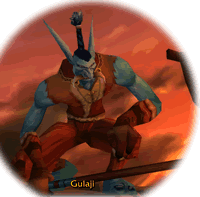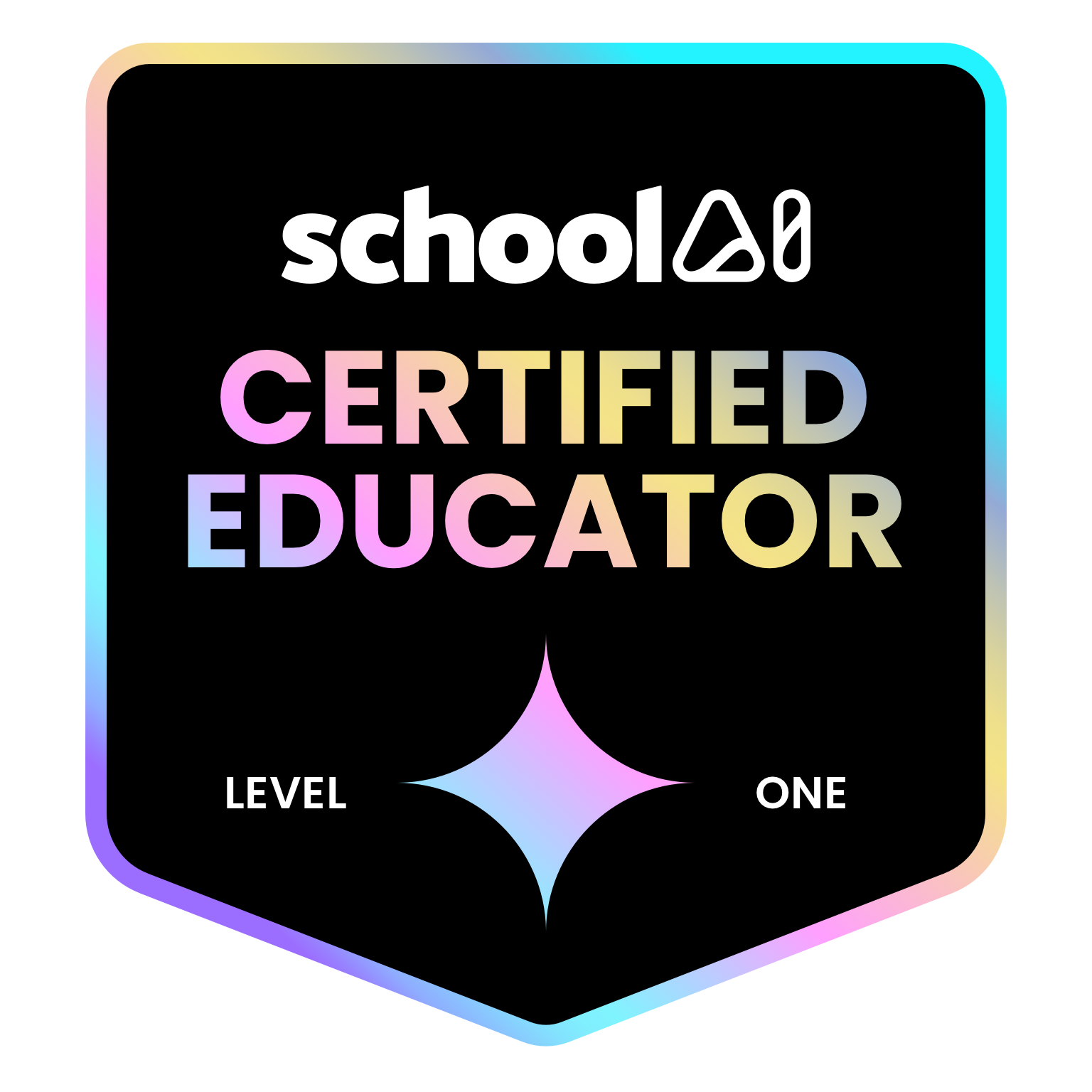 This past Thursday Nicholas Provenzano hosted a Twitter chat at #NerdyChat on the topic of Gamification (see transcript here). Gamification is the idea of using the best of video gaming in the classroom. Why? Watch a kid play a video game. Video games hook the player and motivate the player to persevere through failure and learning until he or she beats the game. There are teachers who want to see that kind of motivation and engagement in the classroom. We want to tap into that fearless learning to help kids engage with our content.
This past Thursday Nicholas Provenzano hosted a Twitter chat at #NerdyChat on the topic of Gamification (see transcript here). Gamification is the idea of using the best of video gaming in the classroom. Why? Watch a kid play a video game. Video games hook the player and motivate the player to persevere through failure and learning until he or she beats the game. There are teachers who want to see that kind of motivation and engagement in the classroom. We want to tap into that fearless learning to help kids engage with our content.
Like Nicholas I’ve been playing video games since I was a kid and I still do but I have not figured out any ways to incorporate that into my Science classes. I want to make the boring parts of my classes more fun. I’m not looking to make my whole curriculum into a game. There are many aspects of my Science curriculum that have to remain the way they are because Science is cool and kids need to experience what Science is including how to be scientifically literate. For kids who are considering a future in Science I have to provide them opportunities to advance in Science so making my whole curriculum into games is not what I’m after. Something I wouldn’t mind doing is having my students play a game to learn a particular thing. This year I volunteered my 8th grade Life Science students to beta test (that means to try out a game and provide feedback prior to that game going on the market) an immunology game that’s being developed by the American Federation of Science and Rice University. It was great, the kids had fun, they learned a bit about how our immune system fights off infection, and they provided feedback to the developers of the game. Besides all that, it was free! It was a win all around. Finding quality, fun, engaging, educational games like that is not easy and with shrinking budgets it’s not all that viable as an option. I’ll jump on any opportunity that comes my way because I am holding out for a perfect game that helps kids learn something in my curriculum but I’m not holding my breath. The immune game was a great opportunity even though it’s really not part of my curriculum (it still fit into life science).
There are many genres of video games and one particular genre that we see a lot in the media are role-playing games or RPGs. In this age of high speed internet millions and millions of people are playing RPGs together, they call these multiplayer role-playing games and since they are online and so many millions of people play them they are called massively multiplayer online role-playing games or MMORPGs. What happens in these games, like World of Warcraft, is that the player is no longer working alone to beat the game. Now the player gets to team up with other players all over the world to form teams to complete quests, make more game money, gain more game experience, just plain help each other and have fun beating the game. Teams can form guilds around similar interests thereby having a support group to help whenever they play. We tap into social networking for learning in education and many of our students do this when they play MMORPGs. So they are playing a game, interactively living a story, and networking and learning from others at the same time. And if you are wondering if this is limited to older kids, think again. My daughter was playing this game called ToonTown when she was seven (she could have started at a younger age, but we only found out about it when she was seven). In ToonTown she got to meet Disney characters as well as play with her friend who also had an account. When her friend wasn’t online to play, my daughter played with other kids who were on who taught her how to play and helped her with quests (I played with her and it was a positive experience for my daughter). As she became more proficient she helped new players when they needed help. Playing that game and having to communicate by chatting is how my daughter learned to type (and she got pretty fast). There’s something there that is very conducive to learning. There are many, many of these online RPGs for kids to choose and many have free versions that kids can play. MMORPGs are prolific and you probably have many students who play one or more of them. Kids can play with each other or with strangers even from their Xbox.
The other end of the spectrum include games that require no technology like board games. Similar problems arise in that there are no perfect board games that help kids learn anything in my curriculum. And if there were I’m not so sure I could afford a class set. We could have students create their own board games, even their own tech games. I haven’t had much success there. There are other tech free options. I heard about this book from a math teacher in my Math/Science PLC called The Multiplayer Classroom: Designing Coursework as a Game by Lee Sheldon and that caught my eye. I went ahead and bought the book and added it to my summer reading list to see if I can make something out of it. From what I gather without having read the book yet Lee Sheldon shows how you can transform your class into a multiplayer role-playing game without technology and no matter what curriculum you teach. What makes that possible is that the features of such games are not limited to technology. For example, instead of having students start your class with an A that slowly gets chipped away at every time they make a mistake (something I think is so wrong, which is why I’ve gone gradeless) you would have your students start with zero experience points. As they learn and progress they gain experience points because they are getting better at understanding the content. Just like a game they can level up as they gain more experience. That is one example of how a teacher can gamify her or his classroom. If this sounds intriguing you should check out this TED Talk by Paul Andersen to see how he gamified his class. It’s less then 11 minutes long.
Here is another video, not quite 10 minutes long, about Gamifying Education. Watching the Gamifying Education video is where I first came across the Alternate Reality Game or ARG idea. I like the sound of that one even though I don’t fully comprehend it yet. It seems to be like an interactive story. Some teachers probably use some from of ARG naturally. Not being one of those teachers I need ideas because it just sounds like taking what you’re teaching and making it interactive and interesting. Participating in the NerdyChat brought to my attention the part of gamification that appeals to me the least. The idea of points and rewards. I’ve never been a reward giving teacher and I’ve been gradeless, meaning no points, percentages, letters, or averages, for the past two and a half years. I understand how giving kids rewards in class for doing things only leads to kids seeking greater rewards for the same thing. Pretty soon it becomes about the reward and not so much about the activity. I want my kids to focus solely on working towards learning Science. I want to tap into their creativity and their natural curiosity and love of learning without doing things that will squelch that (like school tends to do to kids). So what I would like to do is to gamify some of my coursework and do so without points and rewards or badges. And I think I can do it too.
Here’s what makes me think it’s possible to gamify without points, rewards or badges. It’s an online game called Minecraft. Some kids have really taken to this online game and there are also many educators who have tapped into this game as a learning tool in the classroom. What sets this game apart from others is that there is no story, no levels, no points, no quests, no rewards. You just mine for raw materials and then build things. You can build anything. If I taught social studies, especially early civilizations, I would have students use Minecraft to start their own civilizations from the ground up. We would explore together what it might have been like in early civilizations. We could split the class into different tribes to see how they work together or compete for resources. There are many possibilities.
Thinking about Science I could take something like the study of energy and show kids the different levels of understanding. First, there needs to be a story to make it an ARG. Kids start out with different knowledge, skills, etc. As they learn more they gain new knowledge and skill levels. They don’t earn points to attain the different levels they just have to show understanding of the material to achieve the level. I don’t know, just thinking aloud now but this sounds like what I’m currently doing with standards-based grading. It would just be more fun because I would make it more game-like. Kids could work together in teams, like we do now, but to level up. Hmm. Yeah, something like that maybe. At least without badges and stuff. When I play a game I’m motivated to beat the game. The reason I level up and gain experience, knowledge, and skills/tools is to get to the end and beat the game. I would need to incorporate that somehow. I’ll write more about this as I get more ideas and develop this further.
For some thoughts on what things to look out for when considering to gamify your classroom read It’s Not a Game (Thoughts on Gamification) by John T. Spencer.





















































